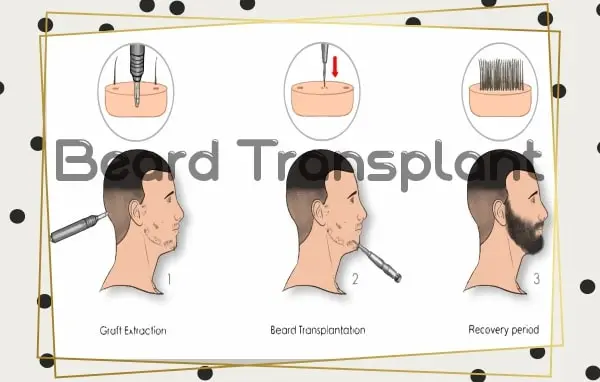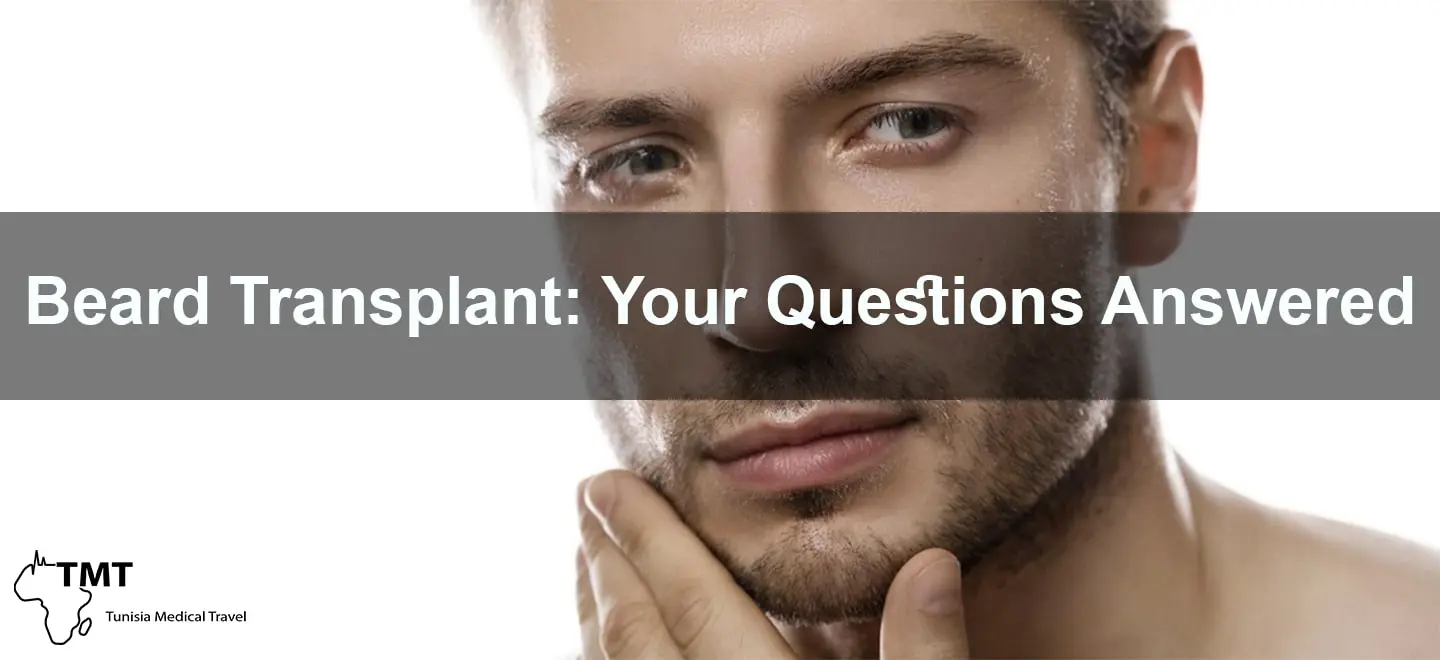Beard Transplant: Your Questions Answered
Beard Transplant: Your Questions Answered
In recent years, the demand for beard transplants has surged, driven by a desire for fuller, thicker facial hair. If you’re considering this procedure, you likely have several questions. Below, we’ll delve into the most common inquiries regarding beard transplants, providing you with comprehensive insights.
How does a beard transplant work?
Hair removal and implantation are two separate steps in this process. Hair follicles are extracted from the donor area with a micro punch, then the extracted hair grafts are implanted within the beard using tiny incisions after they have been sorted by quality. When done correctly, the procedure results in clone hair growing in the target area. Please remember that not only the precision of the technique used, but also your commitment are also crucial: you will need to let the hair grow out and shave after a beard transplant so that the hair roots can be strengthened and the hairs can grow uniformly.
A beard transplant is a procedure in which hair is implanted into the beard area. This can be done by removing hair from a donor region, usually the nape’s back, and then transplanting it into the beard, where it integrates with the existing facial hair. This can be an excellent approach for those who are unable to grow a full beard naturally. Some men may have patches of hair on their cheek or neck, whereas others may have no hair at all. Beard transplants can be used to fill in any part of the beard.
How long does a beard transplant take to heal?
The healing process post-beard transplant varies from individual to individual and depends on various factors such as the technique used, the patient’s overall health, and adherence to post-operative care instructions. Typically, patients may experience some degree of redness, swelling, and scabbing in the recipient area immediately after the procedure. However, these side effects usually subside within the first week or two. As the healing progresses, the transplanted hair follicles begin to take root in the recipient area, and new hair growth gradually emerges. Initially, the newly transplanted hair may appear thin and sparse, but it will thicken and become more natural-looking over time. Complete healing and the final results of the beard transplant may take several months to become fully apparent.
To expedite the healing process and optimize the outcome of the procedure, patients are advised to follow their surgeon’s post-operative care instructions diligently. This may include gentle cleansing of the recipient area, avoiding exposure to direct sunlight, refraining from strenuous activities, and taking prescribed medications as directed. It’s essential to have realistic expectations regarding the timeline of beard transplant healing. While some individuals may notice significant improvement within a few weeks, others may require more time to achieve their desired results. Patience and proper care are key factors in ensuring a successful and satisfying outcome from a beard transplant procedure.
Where does beard transplant hair come from?
Beard transplant procedures involve the strategic relocation of hair follicles from one part of the body to another. Typically, the donor hair for a beard transplant is harvested from the patient’s own scalp, particularly the back and sides of the head. These areas are selected for their abundant and genetically resistant hair follicles, which are less susceptible to the effects of male pattern baldness.
The donor hair is carefully extracted using advanced surgical techniques to minimize damage to the surrounding tissues and ensure the viability of the grafts. Once harvested, the hair follicles are meticulously prepared for transplantation into the recipient area of the beard. In some cases, particularly for individuals with limited scalp donor hair or specific aesthetic preferences, body hair may be used as an alternative source for beard transplant grafts. Hair from areas such as the chest, back, or abdomen can be harvested and transplanted into the beard region to achieve desired results.
The choice of donor hair source depends on various factors, including the patient’s hair characteristics, the extent of the beard transplant procedure, and the surgeon’s expertise. Regardless of the donor site, the goal is to ensure natural-looking and long-lasting results that seamlessly integrate with the existing facial hair. By utilizing the patient’s own hair follicles, beard transplant procedures offer a safe and effective solution for individuals seeking to enhance their facial hair density and achieve a fuller, more masculine appearance. Consulting with a qualified and experienced surgeon is essential to determine the most suitable donor hair source and customize the treatment plan according to the patient’s unique needs and aesthetic goals.

How much does a beard transplant cost?
The cost of a beard transplant can vary significantly depending on several factors, including the geographical location of the clinic, the experience and reputation of the surgeon, the extent of the procedure, and any additional services included in the treatment package.
Firstly, the geographical location plays a significant role, with clinics in urban areas or regions with a higher cost of living typically charging more than those in rural settings. Secondly, the expertise and reputation of the surgeon performing the procedure can affect pricing, as highly skilled and experienced surgeons may command higher fees. The extent of the transplant required, determined by the number of grafts needed, is another factor influencing costs; patients with larger areas to cover or more extensive restoration needs may face higher expenses. Additionally, clinics may offer extra services such as post-operative care or complementary treatments, which can contribute to the overall cost. Lastly, the quality of clinic facilities and level of patient care provided also influence pricing, with clinics boasting state-of-the-art equipment and luxurious amenities often charging premium fees for their services.
Before undergoing a beard transplant procedure, it’s essential to schedule a consultation with a qualified and experienced surgeon to discuss your specific needs, goals, and expectations. During the consultation, the surgeon can provide a personalized treatment plan tailored to your individual requirements and provide a detailed breakdown of the associated costs. Additionally, patients should inquire about financing options, payment plans, or insurance coverage, if applicable, to help manage the cost of the procedure. Investing in a beard transplant is an investment in your confidence and self-esteem, and choosing a reputable clinic with experienced professionals can help ensure a successful and satisfying outcome.
Beard transplants offer a viable solution for individuals seeking to enhance their facial hair density and achieve a more masculine appearance. By addressing common concerns and providing comprehensive information, we hope to empower you to make informed decisions regarding this transformative procedure. Should you decide to proceed, remember to choose a reputable clinic and consult with experienced professionals to ensure optimal results.

